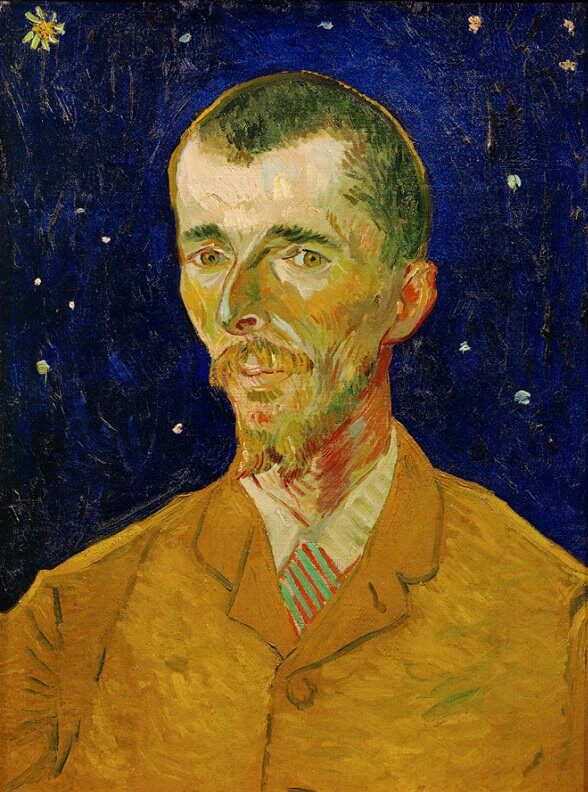Eugene Boch The Poet, 1888 by Vincent Van Gogh

Shortly after his second version of The Peasant, Van Gogh set out to paint the portrait of a completely different human type - that of the poet. Van Gogh described the canvas as 'a first sketch of this picture of which I have long dreamt - the poet'. The artist had already described his intentions in a letter to his brother at the beginning of August:
I should like to paint the portrait of a fellow artist who dreams great dreams [...] Behind the head [...] I paint infinity, I give it a plain background of the richest, the most intense blue".
Without naming any names, Van Gogh was undoubtedly thinking of Paul Gauguin, an artist for whom he had boundless admiration and whom he hoped would come to Arles.
Van Gogh's notion of the poet dreaming romantic and revolutionary dreams was derived from Carlyle's On Heroes, Hero-Worship, and the Heroic in History, in which the author had included a chapter on Dante. As a poet, Dante was described in Carlyle's obscure prose as possessing 'an infinitude in him; communicates an Unendlichkeit, a certain character of "infinitude", to whatsoever he delineates'. It seems that Van Gogh found this description applicable to the inspired Gauguin, who even bore a physical resemblance to Dante, having the same sharp features as the Italian poet. The artist was familiar with Dante's portrait, as he had often reproduced it from Bargue's Cours de dessin.
In the absence of his friend, however, he asked the Belgian painter Eugene Boch, who lived nearby in Fontvieille, to pose as a poet. Since the 33-year-old Boch - 'this young man with a look of Dante about him' - also bore a slight resemblance to Gauguin, Van Gogh clearly found him an excellent model for the portrait of the poet. The background, a starry night, is an allusion to the subject's lofty, eternal aspirations. The colour contrast of the light portrait against the dark background was intended, according to Van Gogh, to 'express the thoughts of a face'.
The artist had his work framed and hung it in his bedroom. At the beginning of October he tried to transform his esquisse into a real tableau, but he was dissatisfied with the result and destroyed the canvas. The Poet was never to become a finished painting; perhaps Van Gogh had in the meantime become reconciled to the sketch. When he sent a consignment of work to Theo from Arles in May of the following year, The Poet was the only portrait among the rolled-up canvases to be found worthy on arrival of a stretcher.




















